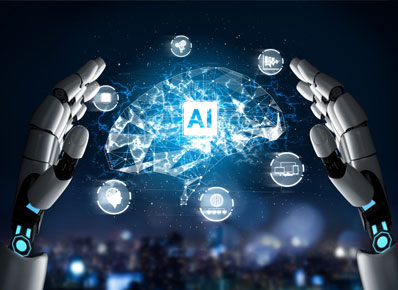
As technology is evolving AI field is updating. AI is one of the most demanding and evolving technology.
What is Artificial Intelligence (AI)?
Artificial Intelligence (AI), the ability of machines capable of performing tasks that require human intelligence. We are using so many types of Artificial Intelligences in our day-to-day lives, For Example Google’s Google Assistant, Self-driven car, Amazon’s Alexa and many more.
Why Artificial Intelligence?
- AI can solve real-world problems very easily and with high accuracy.
- AI can do the tasks with high speed and accuracy compared to humans.
- We can create virtual assistants like Google Assistant, Siri and Alexa.
- With AI, we can build robots that can work in a risky environment.
- We can use AI in Healthcare Industry for diagnostics and automated operations.
- AI is also useful to manage the data or information.
There are two categories in Artificial Intelligence one is Weak AI and another one is Strong AI.
Weak AI:
Weak AI is also referred to as Narrow AI, this type of AI is limited to a specific area and performing a single task extremely well. Weak AI systems do not have general intelligence. They have a specific area of intelligence and do specific tasks, we have so many weak AI such as Google Assistant, Alexa, Google AdSense and many more.
Google suggestion is another example of Weak Artificial Intelligence, a computer uses an algorithm to analyze what is the interest of a specific user based on their search history, gender, age and places they visited, depends on these results google will show us the ads on YouTube and websites.
Limitations of Weak AI:
Some of the problems with Artificial Intelligence includes the possibility to cause harm if a system fails. For example Google Assistant is also a Weak AI, It can perform tons of tasks but it also has so many limitations.
For every task algorithm should include some instructions. If the instructions for a specific task are not there the operation will fail so we call it a Weak or Narrow AI.
Strong AI:
Strong AI, also referred to as Artificial General Intelligence (AGI) or General AI, AGI is a machine with general intelligence like a human being, It is capable of apply intelligence to solve any complex problem.
The machine would require an intelligence equal to humans, It includes self-aware consciousness that can solve problems, learn plan for the future.
Strong AI aims to create intelligent machines that work like a human brain. Strong AI would have to learn through inputs and experiences to increase the ability over time.
Subsets of Artificial Intelligence

Following are the most common subsets of AI.
- Machine Learning
- Deep Learning
- Natural Language Processing
- Expert System
1. Machine Learning (ML)
Machine Learning is a subset of AI, It provides the system which has the ability to learn automatically and improve from experience without being explicitly programmed. Machine Learning algorithms use historical data as input to predict new output values.
Machine Learning focuses on the development of computer program which can use historical data and use it to learn themselves.
The primary aim of Machine Learning is to allow computers to learn automatically without human assistance and take actions/decisions accordingly.
Ex: Self Driving Cars, Ranking Posts on Social Media etc.
There are 4 types in Machine Learning:
- Supervised Learning
- Unsupervised Learning
- Semi-Supervised Learning
- Reinforcement Learning
2. Deep Learning
Deep Learning is a subset of Machine Learning, It is a system that is capable of learning from data that is unstructured or unlabelled. Deep Learning works with Artificial Neural Network, so it is also known as Deep Neural Learning or Deep Neural Network.
Deep Learning develops a system which can imitate how human think and learn to take decisions without human instruction.
Deep Learning is an AI function that mimics the works of the human brain in processing data for use in detect objects, recognizing speech and making decisions.
3. Natural Language Processing
Natural Language Processing (NLP) is a subset of AI, It builds the system or software that is capable of understanding and analyzing the text and speech. Without NLP humans cannot communicate with AIs with voice commands.
For Example, Grammarly using NLP to check grammatical accuracy of text and detect emotions in that text, Google Translator, Virtual Assistants like Google Assistant and Siri, etc.
4. Expert System:
An Expert system is a computer that is designed to solve complex problems and provide decision-making ability. It performs this by extracting knowledge from the knowledge base using the reasoning and interface rules accordingly to the user queries.
It contains the specific knowledge of a specific domain and can solve any complex problems of that specific domain. They are designed only for those particular domains.
Ex: Chemical Industries and Clinical Support System
This is a short introduction to Artificial Intelligence, I hope you enjoyed this article, If you find this article is helpful drop a comment below and please share it with your friends and colleagues!
Always remain open to learn new things!


February 24, 2021Good job, all the best for future blog
March 1, 2021Superb.